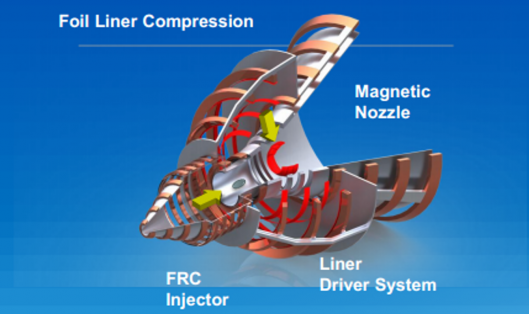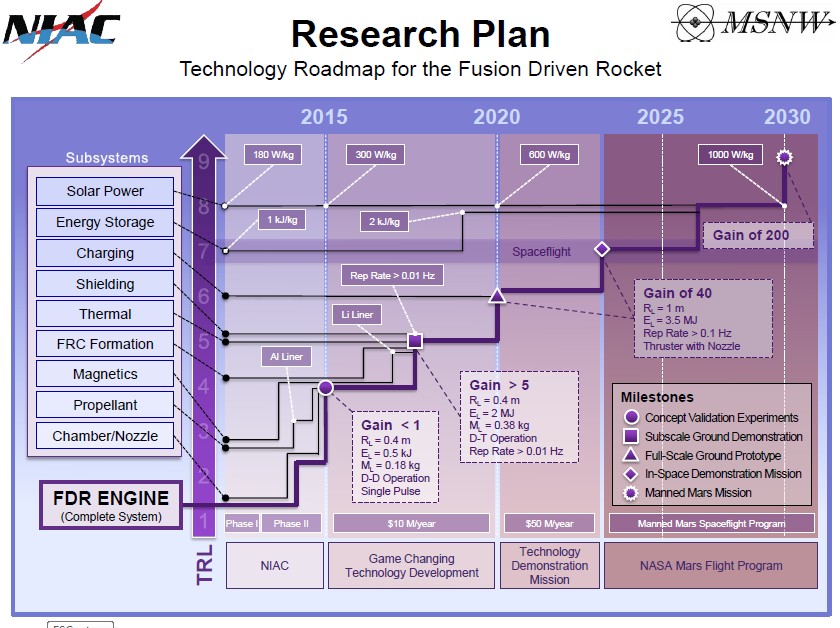John Slough’s Fusion Driven Rocket could reach Mars in 30 days, though for the first missions a more achievable 90 day flight time, and 210 day Round-Trip time, is touted.
Roadmap to a Fusion-Driven Rocket with a 90 day trip from Earth to Mars [pptx slides from Pancotti]
Mission Design Architecture for the Fusion Driven Rocket [paper from 2012 describing the architecture of such a mission]
The Fusion Driven Rocket [NIAC Phase II presentation by Slough, Pancotti & team]
The following diagram illustrates the propulsion system basics:
To achieve fusion, the fusing material needs a rapid input of energy and high density conditions – conflicting demands as the energy wants to drive the materials apart. Such conditions can be achieved briefly by dynamic means – in this case, by imploding metal foils (“liners”) onto a small Field-Reversed Configuration (FRC) ‘plasmoid’ composed of fusion fuel. A plasmoid is a self-shaped structure of plasma (ionised matter is ‘plasma’), which in an FRC pulls itself ever tighter via its own magnetic fields. Thus it naturally drives itself towards high density, until it loses too much energy to radiation and unravels. Before the plasmoid does so, it is compressed by magnetically imploding liners to fusion conditions for long enough to react a significant fraction of the fuel, releasing much more energy than the liners input into the plasmoid. Much more.
For the initial design, as described, the Fusion-Driven Rocket’s ignition system is driven by a solar-array, with no attempt at extracting fusion energy from the plasma stream. Eventually an auxillary power source not restricted to Sunlight will be needed for the Outer Planets, but to get to Mars and the asteroids, a solar array is the least development heavy power-source. The fusion reactions occur once a minute or so, due to the charging time of the compression system, and the current design is very conservative in system components – the solar arrays get 0.2 kW/kg, while the capacitor system stores 1 kJ/kg and so on. Thus a deliberately conservative design based on what we can build now – the only novelty being the fusion engine.
That final NIAC presentation has this rather optimistic development timeline:
…the optimistic point being that it’ll be a “NASA Mars Flight Program” that implements the Fusion-Driven Rocket. I wonder.


